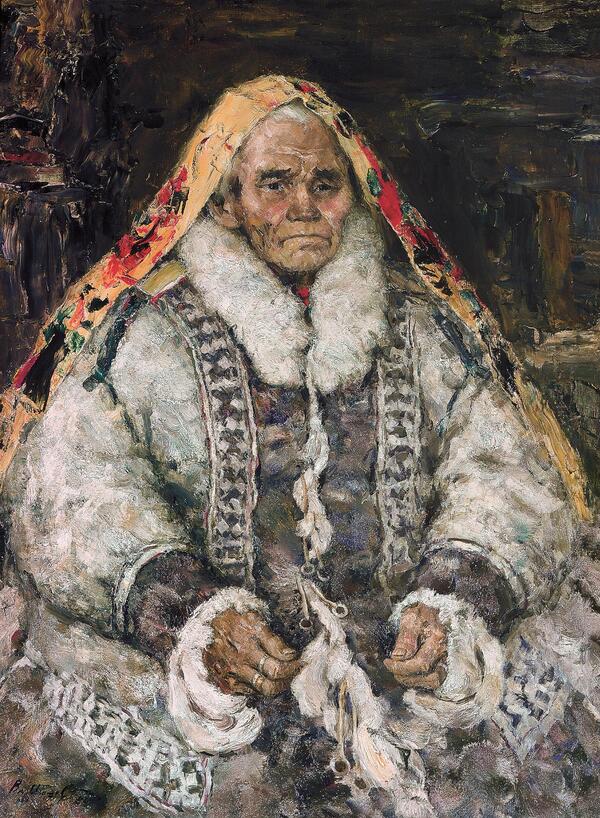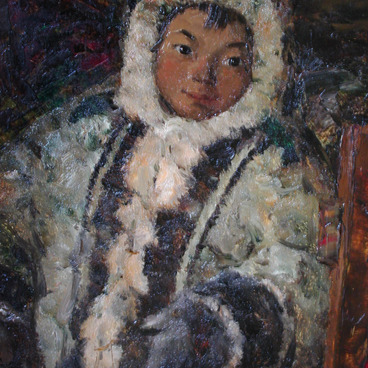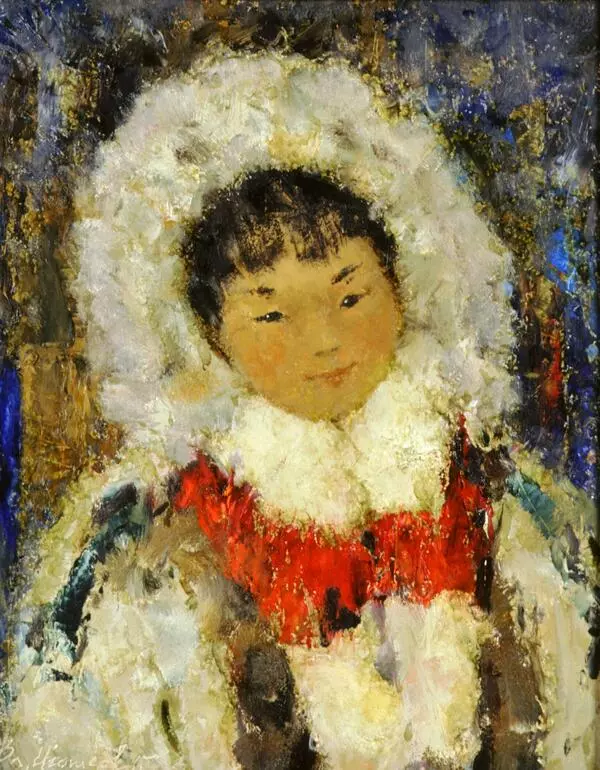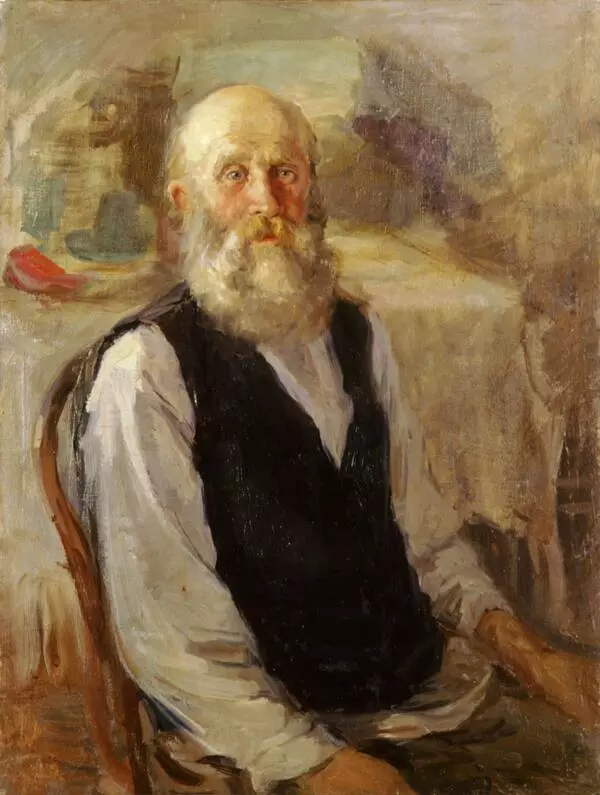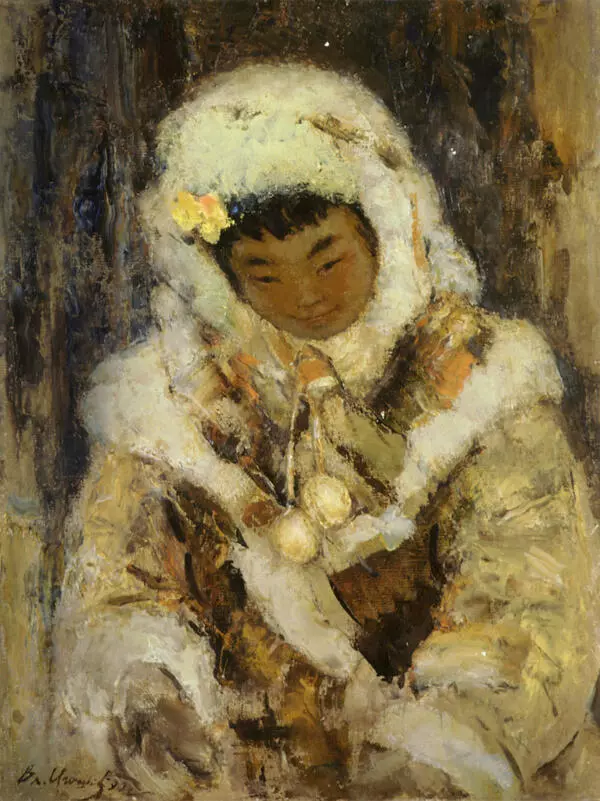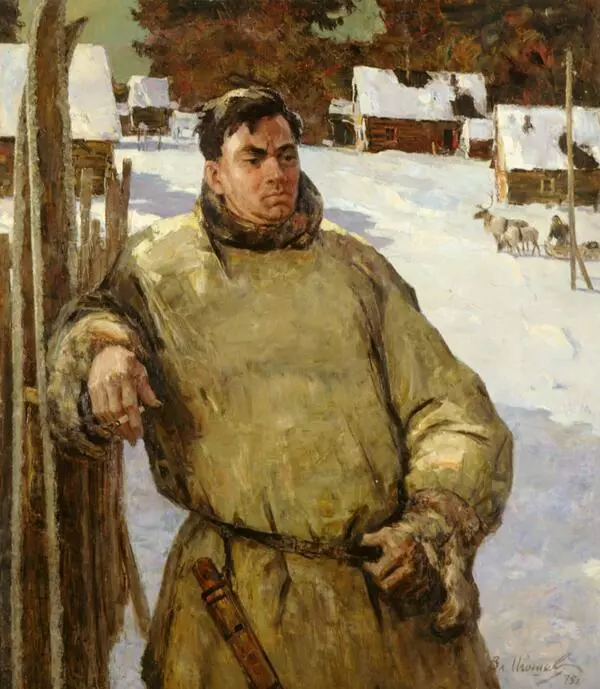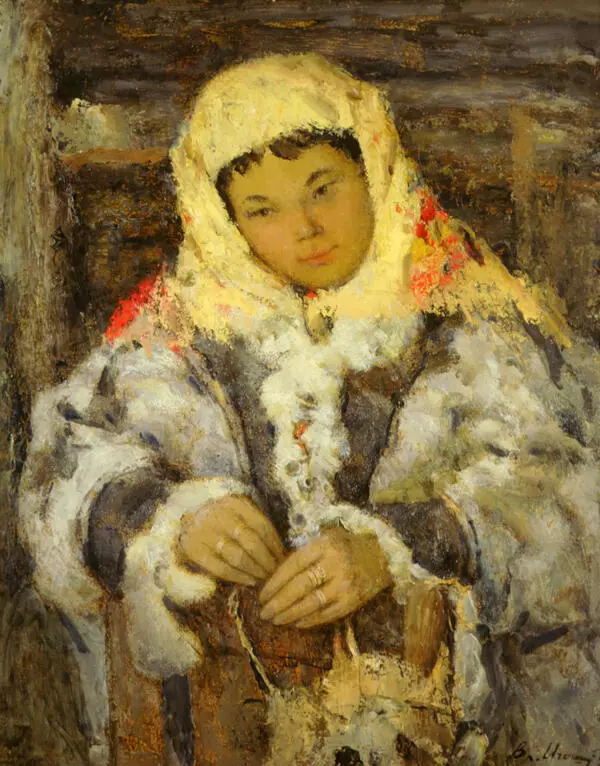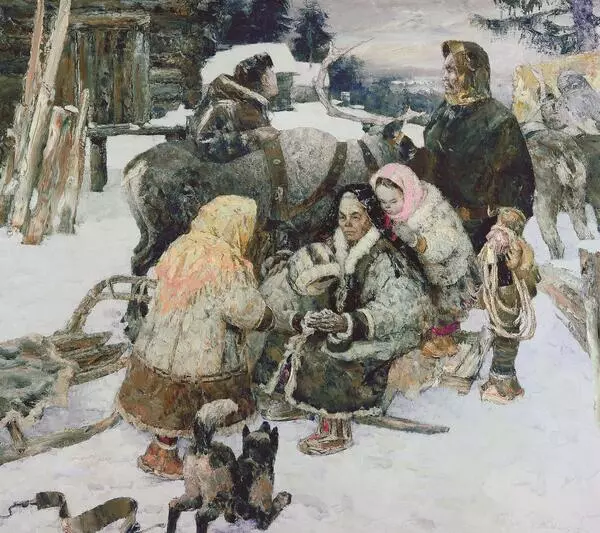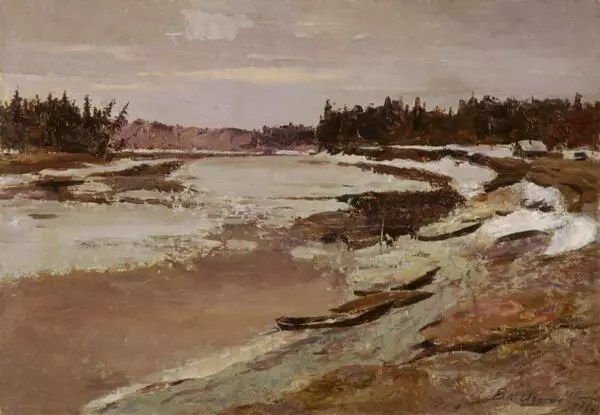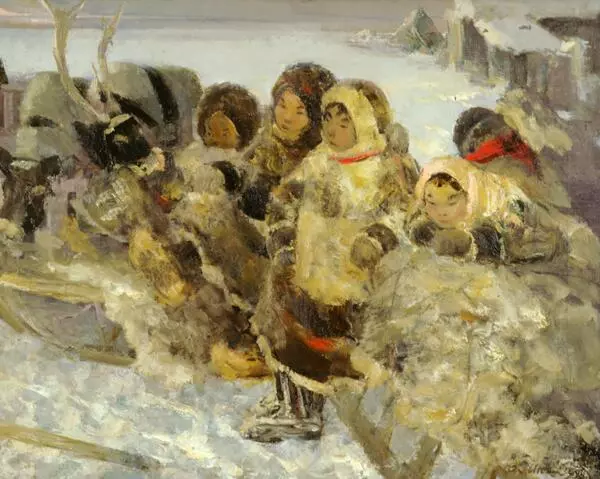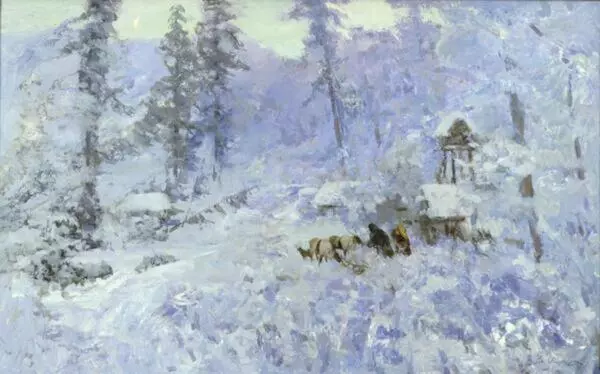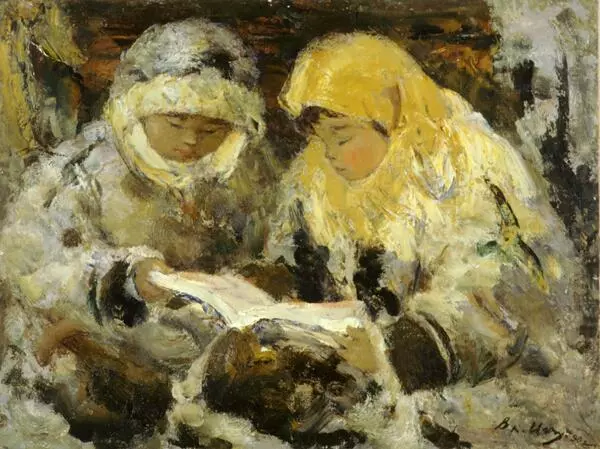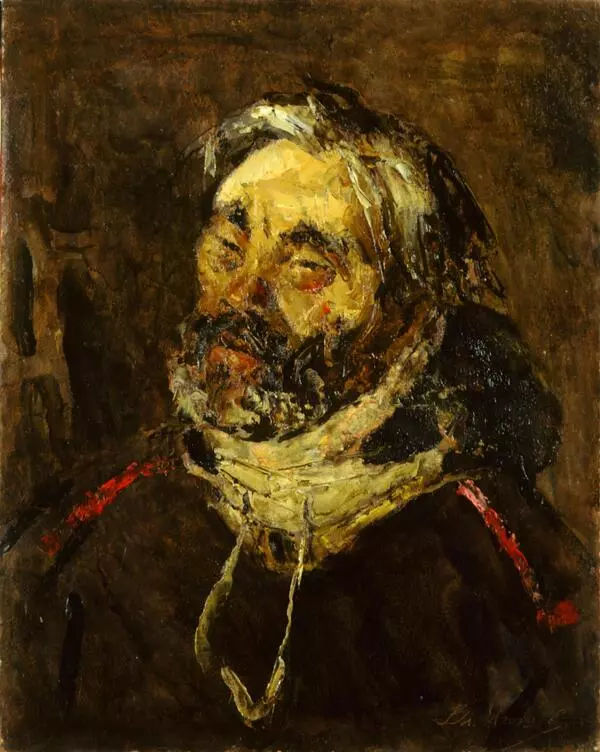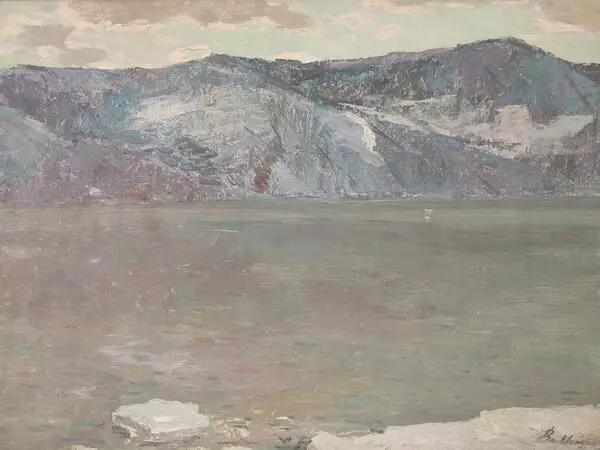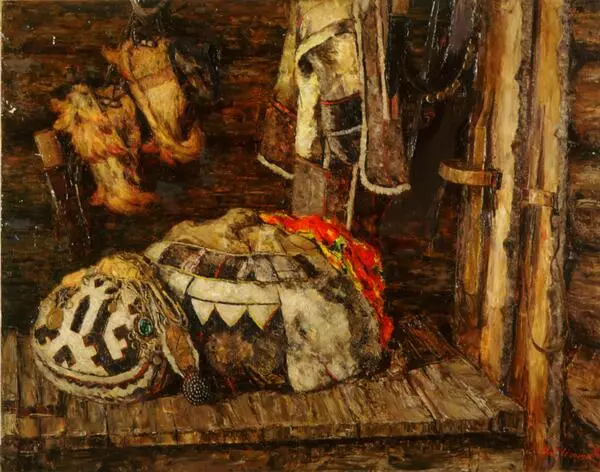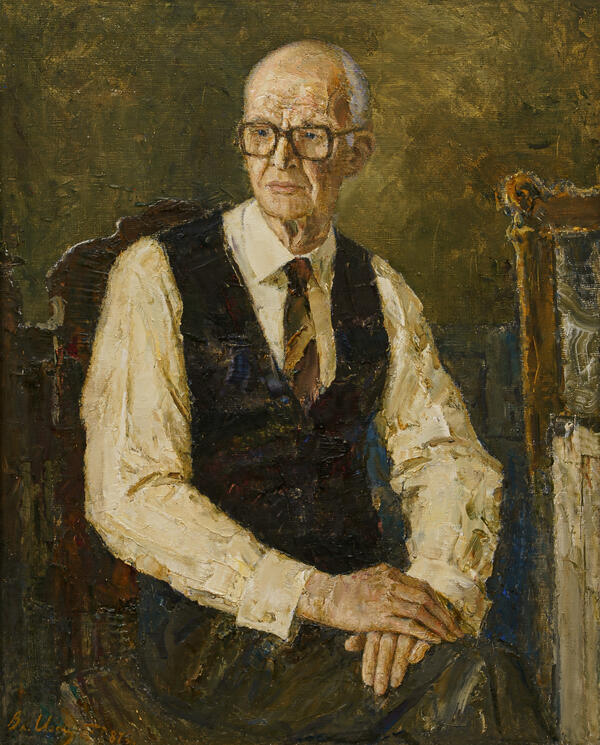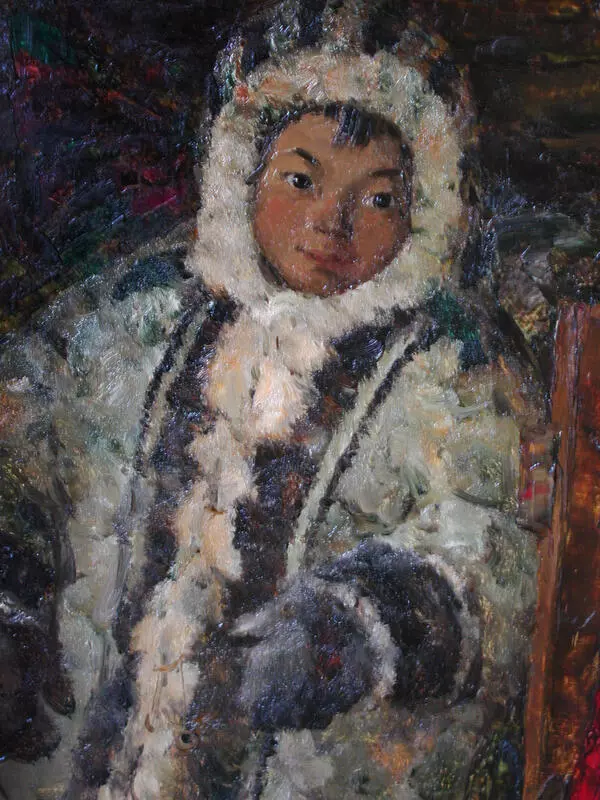The People’s Artist of the USSR Vladimir Igoshev was born in 1921 in Bashkiria. The future artist studied in Ufa at the Arts Faculty of the Ufa College of Arts. In 1950 Vladimir Igoshev graduated from The Surikov Art Institute in Moscow. The artist worked in various genres: he painted portraits and self-portraits, worked on landscapes and genre paintings.
Portraits of elderly people by Vladimir Igoshev are very picturesque. Thanks to the composition each of Igoshev’s ‘old women’ embodies the keeper of national traditions.
The young painter Vladimir Igoshev first visited Yugra in 1954. There he explored the traditions of the Northern peoples and their everyday life. He visited Kurikov’s and Anyamov’s yurts, the villages Burmantovo and Suevatpaul. In this region the artist discovered a new unknown culture, and thanks to his paintings it was discovered not only in the Soviet Union, but also in the foreign countries.
The painter wasn’t only inspired by the landscapes. He was more interested in the people and everyday life of the indigenous peoples of the North. He created a lot of genre paintings and portraits. The locals visited him with pleasure in order “to be painted”. For many of them oil paints were curious and unusual.
The artist often painted en plain air, in the cold. From time to time he had to warm his hands in the fur mittens. In order to protect the paints from freezing, Vladimir Igoshev made a small fire under the easel.
The big size of the painting, thick space filling and static image makes it a full-dress portrait. The background isn’t carefully elaborated; the thick dark strokes of paint underline the warm light colours of the national clothing. The Ob Ugrian women wore kerchiefs. They were folded horizontally or diagonally in the way that their tops were bigger than the bottom parts. At the end of the workday its ends were tied up around the neck. The old woman wears a traditional northern piece of clothing called sak. It was made of buckskin, skin of hare, squirrels, birds, and fabric. The sak is a straight unbuttoned piece of clothing, which widens downwards.
Portraits of elderly people by Vladimir Igoshev are very picturesque. Thanks to the composition each of Igoshev’s ‘old women’ embodies the keeper of national traditions.
The young painter Vladimir Igoshev first visited Yugra in 1954. There he explored the traditions of the Northern peoples and their everyday life. He visited Kurikov’s and Anyamov’s yurts, the villages Burmantovo and Suevatpaul. In this region the artist discovered a new unknown culture, and thanks to his paintings it was discovered not only in the Soviet Union, but also in the foreign countries.
The painter wasn’t only inspired by the landscapes. He was more interested in the people and everyday life of the indigenous peoples of the North. He created a lot of genre paintings and portraits. The locals visited him with pleasure in order “to be painted”. For many of them oil paints were curious and unusual.
The artist often painted en plain air, in the cold. From time to time he had to warm his hands in the fur mittens. In order to protect the paints from freezing, Vladimir Igoshev made a small fire under the easel.
The big size of the painting, thick space filling and static image makes it a full-dress portrait. The background isn’t carefully elaborated; the thick dark strokes of paint underline the warm light colours of the national clothing. The Ob Ugrian women wore kerchiefs. They were folded horizontally or diagonally in the way that their tops were bigger than the bottom parts. At the end of the workday its ends were tied up around the neck. The old woman wears a traditional northern piece of clothing called sak. It was made of buckskin, skin of hare, squirrels, birds, and fabric. The sak is a straight unbuttoned piece of clothing, which widens downwards.

